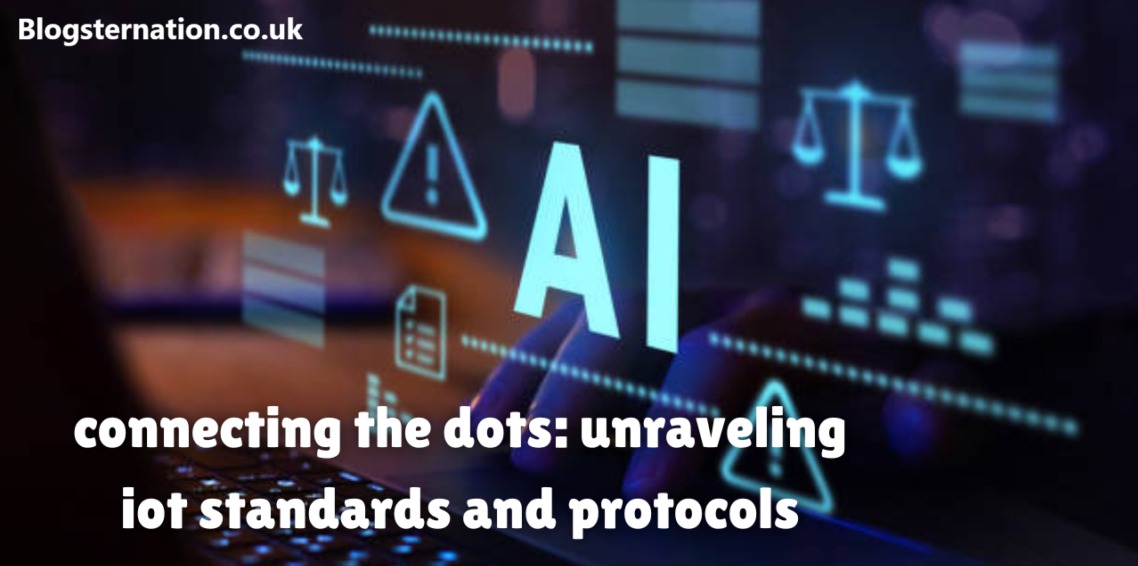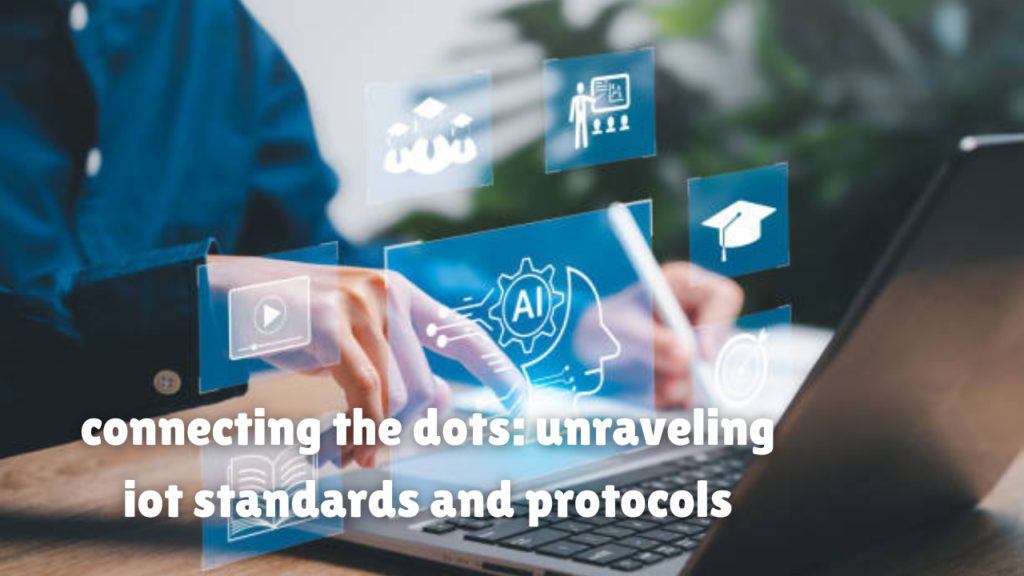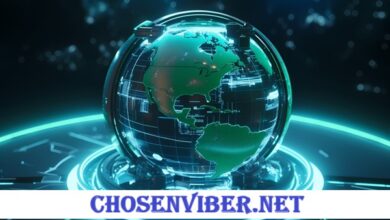Connecting the Dots: Unraveling IoT Standards and Protocols

Imagine a world where your refrigerator could communicate with your grocery store, or your car could tell the traffic lights to turn green. This is the promise of the Internet of Things (IoT), an interconnected network that transforms everyday objects into smart devices. However, behind this technological marvel lies a complex web of standards and protocols that make it all possible.
As we navigate through this landscape, understanding these standards becomes crucial for developers, manufacturers, and consumers alike. They ensure compatibility and security in our rapidly evolving digital ecosystem. So buckle up as we connect the dots and unravel IoT standards and protocols—discovering how they shape our connected future!
Understanding the Internet of Things (IoT)
The Internet of Things, or IoT, refers to the network of physical devices embedded with sensors and software that allows them to connect and exchange data. These devices range from household appliances to industrial machines. IoT has revolutionized how we interact with our environment. Smart thermostats learn your heating preferences, while wearable health monitors track fitness metrics in real-time. This connectivity creates a seamless experience for users.
Data is at the heart of IoT functionality. By collecting information from various sources, businesses can make informed decisions and enhance operational efficiency. Moreover, this technology fosters innovation across various sectors including agriculture, healthcare, and transportation. The potential applications are virtually limitless as everyday objects gain intelligence through interconnected systems.
Understanding this framework lays the foundation for exploring the importance of standardization in ensuring these devices work harmoniously together.
The Importance of Standardization and Protocols in IoT
Standardization and protocols form the backbone of the Internet of Things (IoT). They ensure devices can communicate seamlessly, regardless of their manufacturers. This connectivity is vital for creating a cohesive ecosystem. Without standardized protocols, interoperability becomes a challenge. Different devices might struggle to work together, leading to frustration for users and developers alike. Imagine trying to connect your smart thermostat with various sensors—it just wouldn’t function properly without common standards in place.
Moreover, standardization fosters innovation. Developers can create new applications knowing they will be compatible with existing systems. This encourages competition and drives advancements within the industry. Security is another critical aspect influenced by these standards. Consistent protocols help establish security measures across connected devices, reducing vulnerabilities that hackers could exploit. In an era where data breaches are rampant, this protection is essential for user trust and safety.
Common IoT Standards and Protocols
When diving into the world of IoT, several standards and protocols stand out. MQTT (Message Queuing Telemetry Transport) is a lightweight messaging protocol often used for connecting remote devices with minimal bandwidth. Its efficiency makes it ideal for constrained environments. Another key player is CoAP (Constrained Application Protocol). Designed specifically for low-power devices, CoAP simplifies interactions between those devices and the internet through its RESTful architecture.

Then there’s Zigbee, a wireless communication standard that caters to personal area networks. Known for its low power consumption, Zigbee facilitates seamless networking among connected devices in smart homes. LoRaWAN (Long Range Wide Area Network) extends connectivity over large distances while consuming minimal energy. This capability is crucial in agricultural applications or other scenarios where sensors are spread far apart. Each of these protocols plays a unique role in shaping how IoT ecosystems function efficiently and reliably.
Advantages and Disadvantages of Different IoT Standards and Protocols
Each IoT standard and protocol has its own set of advantages. For instance, MQTT is lightweight and ideal for low-bandwidth situations, making it a favorite in many smart home applications. Its publish-subscribe model ensures efficient message distribution. On the flip side, not all protocols suit every scenario. CoAP, while excellent for constrained environments, may struggle with security when compared to more robust options like HTTPS.
Then there’s Zigbee—great for low-power devices but limited by range. This can be a real hurdle in larger installations where connectivity becomes an issue. When choosing among these standards and protocols, it’s essential to weigh ease of integration against scalability needs. A suitable choice today might limit future expansion possibilities or interoperability with other devices down the line.
Challenges in Implementing IoT Standardization
Implementing IoT standardization presents numerous challenges. A key hurdle is the diversity of devices and platforms in use today. Each manufacturer often develops its own protocols, leading to fragmentation. Interoperability becomes a significant concern as companies strive to make their systems work together seamlessly. Without common standards, this can be an uphill battle.
Additionally, cybersecurity remains a pressing issue that organizations must address proactively. At RTCS, we understand that different standards often fail to tackle vulnerabilities consistently, leaving gaps that cyber threats can exploit. The rapid pace of technological advancement further complicates this landscape. Our custom cybersecurity services are designed to help businesses keep up with emerging technologies while implementing robust, standardized protocols to safeguard their digital assets.
There’s the challenge of balancing innovation with regulation. Striking the right mix ensures that progress isn’t stifled while still providing a framework for safety and compatibility among devices.
The Future of IoT Standardization and Protocols
The landscape of IoT standardization is evolving rapidly. With the increasing number of connected devices, a unified approach is crucial. Future protocols aim to enhance interoperability among various systems. Emerging technologies like AI and blockchain are likely to play significant roles. They can provide secure data exchanges while maintaining efficiency across networks.
As consumer demand grows for seamless integration, manufacturers will need to adapt their solutions accordingly. The focus will shift towards creating standards that not only ensure compatibility but also prioritize user privacy. Moreover, regulatory bodies might step in more decisively to establish guidelines for security and performance metrics. This involvement could foster innovation while ensuring safety within the IoT ecosystem.
Collaborative efforts among tech giants and startups may pave the way for new frameworks that benefit all stakeholders involved in smart technology deployment.
Conclusion
“Connecting the Dots: Unraveling IoT Standards and Protocols” highlights the critical role of standardization in building a functional and reliable IoT ecosystem. As the IoT landscape expands, interoperability, security, scalability, and energy efficiency will remain key factors driving its success.
Looking ahead, the need for a cohesive approach will only intensify. The potential for smart devices in various sectors hinges on how well these standards evolve alongside consumer demands. By embracing this collaborative spirit, we can navigate the complexities of IoT with confidence. This synergy could lead us toward a future where technology seamlessly integrates into our daily lives, enhancing convenience and functionality at every turn.
FAQs
What is IoT, and why does it matter?
The Internet of Things (IoT) refers to a network of interconnected devices that communicate with each other. This technology allows for smarter homes, cities, and industries by enhancing efficiency and automating processes.
Why are standards important in IoT?
Standards ensure compatibility among different devices, leading to seamless integration. They help manufacturers create products that work together effectively while boosting consumer trust in technology.
Can you give examples of common IoT protocols?
Some widely-used protocols include MQTT, CoAP, Zigbee, Bluetooth Low Energy (BLE), and LoRaWAN. Each serves specific purposes based on factors like data transmission range or power consumption.
What are the advantages of having multiple IoT standards?
Various standards cater to different requirements such as energy efficiency or connection types. This diversity fosters innovation but can also lead to fragmentation within the ecosystem.
Are there any downsides associated with diverse IoT protocols?
Yes, too many competing standards can create confusion among consumers and developers alike. It may hinder interoperability between devices from different manufacturers.
What challenges do we face when implementing standardization in IoT?
Challenges include keeping up with rapid technological advancements while ensuring security across platforms. Additionally, gaining consensus among stakeholders can be difficult due to varying interests.
How do you see the future of IoT standardization evolving?
As technologies advance rapidly, we might witness consolidation around few dominant protocols supporting both legacy systems and emerging innovations focusing on AI integration into smart ecosystems.
For More Updates Please Visit Us: Blogsternation.co.uk



